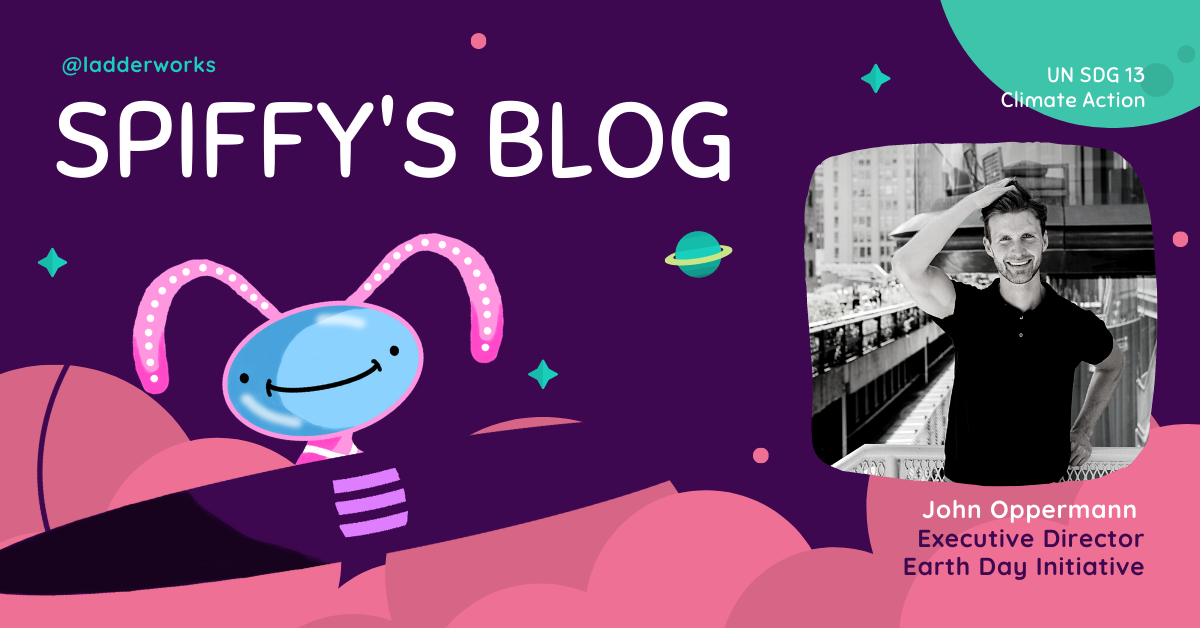John Oppermann: A Movement to Build Green and Healthy Homes
 Hi everyone, Spiffy here, your one and only interplanetary journalist reporting from Planet Earth. I’m thrilled to be talking to John Oppermann, a sustainable home consultant and real estate broker who is working to make our homes healthier and greener places to live. Join me as I discover how he’s doing it!
Hi everyone, Spiffy here, your one and only interplanetary journalist reporting from Planet Earth. I’m thrilled to be talking to John Oppermann, a sustainable home consultant and real estate broker who is working to make our homes healthier and greener places to live. Join me as I discover how he’s doing it!
Spiffy: Welcome John, I’m excited to hear how you’re making our homes healthier! Can you tell me about the specific challenges you’re addressing?
John: Thanks for interviewing me, Spiffy! My goal is always to help transition our lives and our society over to more sustainable models. That is the focus of the work I do with the nonprofit that I run, Earth Day Initiative, and the work that I do as a green and healthy homes real estate broker and consultant. My real estate brokerage practice aims to connect homebuyers with homes that are built to a greener and healthier standard. Our built environment, from our homes to our workplaces, has a huge impact on the environment. If we build these structures in a better and smarter way, they will be more resilient to our looming environmental challenges, more in sync with nature, and healthier for ourselves and our families.
Spiffy: Especially these days, people are spending a lot of time in their homes! Can you talk about what motivated you to do this?
John: I think the transition to a more sustainable lifestyle is the result of the push and pull of supply and demand. We need to have a systemic and widespread transition to more sustainable systems. Individuals definitely have a role to play in this transition—a big part of that role is demanding change. The more people ask for sustainable options, the more pressure there will be to supply those options. The green home industry is relatively undeveloped at the moment because, unlike other industries like sustainable food, the public is largely unaware of the benefits of green homes. People don't realize that a green home can provide better air quality, more natural light, non-toxic materials, and lower energy costs. I want to empower people to ask for these things.
Spiffy: Agreed! And how are you helping to create a more equitable world?
John: Unfortunately, sustainability has often been associated with higher costs and within the reach of the wealthy. But we've also seen that as sustainability scales up, those costs drop and sustainable options become more widely accessible. If we can increase the overall demand for green and healthy homes, we can increase the overall supply across the board. Then having a home that is healthy for its inhabitants and protective of the environment will be the standard. I've been happy to see a lot of ambitious green residential projects in the affordable housing sector. I hope that this becomes the expectation for developers and governments in creating our future housing supply.
Spiffy: Have you reached any new milestones that you’d like to tell me about?
John: I've worked on a few projects recently where we wanted to break down the basics of a green home in easy and appealing ways so that anyone could understand why it would benefit them and their families to live in a green and healthy home. We undertook an ambitious multimedia project that included really fun animations explaining how green home technology works and its benefits. We highlighted everything from a constantly replenished supply of fresh air to indoor air temperature that remains constant throughout the year. We broke down what are often difficult-to-communicate concepts into playful and easy-to-understand materials. I think this will go a long way to gain buy-in from the broader public in pushing us toward healthy and sustainable homes.
Spiffy: Have you ever experienced failure? What did you learn from it?
John: Spiffy, I believe that failure is an incredibly powerful motivator. Finding out what doesn't work is valuable. Experiencing something that really, really doesn't work can provide strong inspiration to put in the work to quickly pivot to what does work. Inspiration is sometimes proportionate to failure. So if you want to see big inspiration, you should experience big failure. It'll push you to explore new things outside of your existing field of vision and take you to places you didn't even see before. After college, I was reconsidering my plans to go into the foreign service because I didn't know what direction I wanted to go in. That period of indecision and uncertainty landed me in the sustainability work I do now and I'm so grateful for that.
Spiffy: So am I! Thanks so much for sharing your passion for sustainable housing. I bet you’ll help inspire lots of kids to create healthy homes too! Over and out!
John Oppermann is the executive director of the nonprofit Earth Day Initiative. He is a green and healthy home consultant and real estate broker, focusing on how we can spark conversation around sustainable and healthy homes. This includes marketing the related economic, health and wellness, and sustainability benefits. John has taught a course on the subject at NYU and is a graduate of Georgetown University’s School of Foreign Service and Harvard Law School.
© 2020 Ladderworks LLC. Edited by Jill Landis Jha. Spiffy’s illustration by Shreyas Navare. Follow Spiffy’s stories of founders building a more equitable world at www.ladderworks.co/blogs/spiffys-blog


